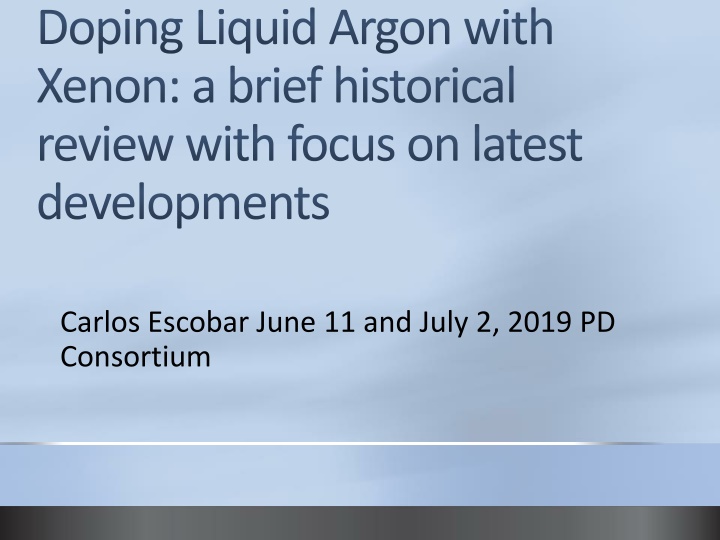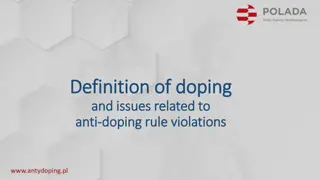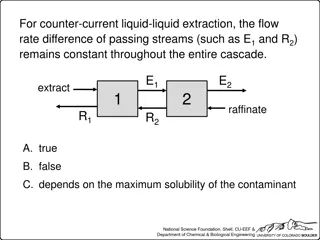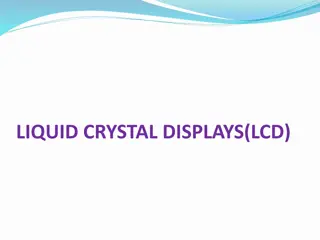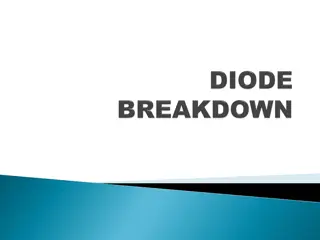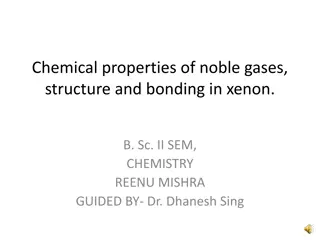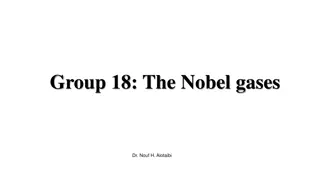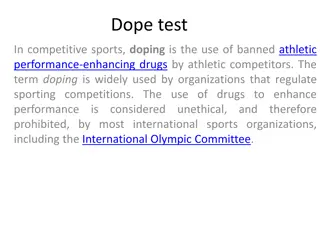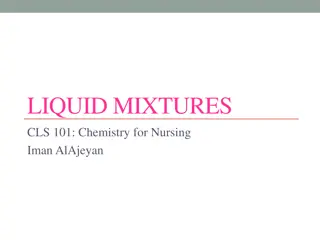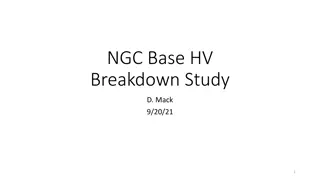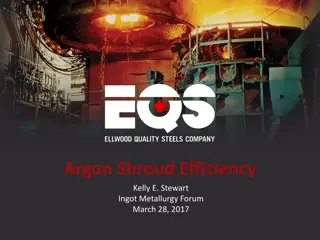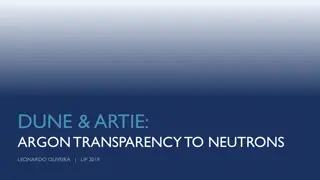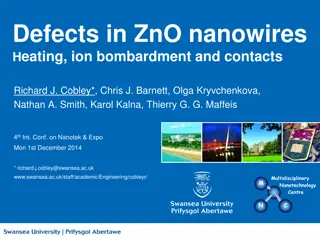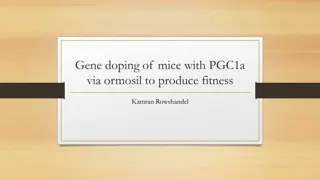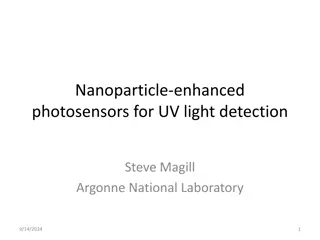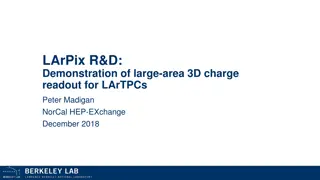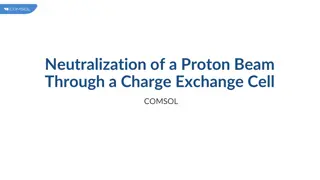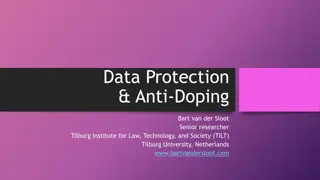Advancements in Doping Liquid Argon with Xenon: Historical Overview
Delve into the historical review and latest developments of doping liquid argon with xenon, aiming to shift light wavelengths for improved visibility in TPC volumes. Key questions address the effect on scintillation components, stability of xenon doping, and potential ice cluster formation. Early studies show promising results in ionization yield and scintillation decay times with Xe doping in LAr.
Download Presentation

Please find below an Image/Link to download the presentation.
The content on the website is provided AS IS for your information and personal use only. It may not be sold, licensed, or shared on other websites without obtaining consent from the author.If you encounter any issues during the download, it is possible that the publisher has removed the file from their server.
You are allowed to download the files provided on this website for personal or commercial use, subject to the condition that they are used lawfully. All files are the property of their respective owners.
The content on the website is provided AS IS for your information and personal use only. It may not be sold, licensed, or shared on other websites without obtaining consent from the author.
E N D
Presentation Transcript
Doping Liquid Argon with Xenon: a brief historical review with focus on latest developments Carlos Escobar June 11 and July 2, 2019 PD Consortium
Motivation for Xedoping Shift the light from 128 nm to 175 nm thus Increasing the Rayleigh scattering length by a factor almost 6: (1/ )^4 {(n^2-1)/(n^2+2)}^2 and improving visibility across the volume of the TPC (from Denver W. and Alex H.) NB: there are other advantages as well
Crucial questions that need to be answered: How the shift affects the fast and slow components of the scintillation as a function of the Xe doping concentration? How to have good control of the doping concentration (mixture preparation)? How stable is the doping? Does Xe form clusters of ice in the bulk of the Lar volume (B. Raz and J. Jortner, Proc. R. Soc. Lond. A 317 (1970) 113-131)?
Doping LArwith Xe-continued Mixing Ar and Xe in the gas phase has a long history going back to the 70 s (laser physics, spectroscopy) see Gendanken, Jortner et al (1972). These works found out very efficient radiationless electronic energy transfer between electronically excited rare gas diatomic molecules and a rare gas atom of a different kind (from ref. above). Does the same happen in LAr doped with Xe?
Let us list right away key points to worry about when discussing Xedoping or any other dopant, for that matter: 1. Long term stability of the doping (is the dopant uniformly spread in the volume? Does it tend to freeze out on the walls, ice clusters in the bulk ? 2. How the wavelength shift affects the fast and slow component of the original LAr light? 3. Is there any effect on the electron lifetime? Any effect on the ionization yield? 4. How accurate is the determination of the final dopant fraction in the bulk volume of LAr? 5. Costs involved in the doping process, not only cost of the dopant itself. And the list goes on ..
First investigations of Xedoping of LAr Kubota, Doke and collaborators (1976) found a 13% increase in ionization yield for Xe doped LAR as compared to pure Ar for concentrations around 1.6% (by volume) used this result as evidence for the existence of exciton states in LAr. In 1982 Kubota et al. find that the slow component of the LAr scintillation light shows a decreasing decay time with increasing Xe concentration-next slide
Change in decay time of the triplet light-Kubota et al, NIM 196 (1982), 101. Electrons from Bi 207 7
But then 10 years later Same group But alpha!
Doping Arwith Xecont. In the early 90 s several groups examined doping LAr with varying concentrations of Xe. Some conclusions (from a review by Arisaka et al. 1. an admixture of 100 ppm Xe was found to produce complete wavelength shifting of the scintillation light from 128 nm to 178 nm [Conti et al. 1996]. 2. Adding Xe to Ar resulted in a progressive increase of scintillation light output, by up to a factor 2, for Xe concentrations up to 1%, in zero electric field, this increase being suppressed by electric fields 1 8 kV/cm [Suzuki et al. 1993]. 3. The addition of only 100 ppm Xe produces considerable changes in scintillation pulse shape, including a small improvement in neutron/gamma pulse shape discrimination for only 300 ppm Xe [Peiffer et al. 2008] suggesting further investigation of pulse shape discrimination at larger Xe fractions.
A sample of results from Peiferret al.(Gerda) Observed an increase in light yield by factors of 1.3 and 1.4 for 85 +/- 20 and 300 +/- 80 ppm of Xe. Considerable effect on PSD for ~ 100 ppm Xe
Peifferet al cont. Fast/total decreases with Xedoping Notice the extra band above the alpha distrib. They attributed the extra band to stratification of Xe
More results for other studies and a controversy Wahl, Bernard, Lippincott, Nikel, Shin and McKinsey, JINST 9 (2014) P08007 investigated (like Peiffer et al, before) a broad range of concentrations, from 9+/- 5 ppm to 1100 +/- 500 ppm (by weight) and found out that there is a slight improvement in light yield and in energy resolution ( Co57 gammas- 662 keV). Pulse shape discrimination (PSD) improved by going to higher concentrations, and slightly better than pure Lar at the highest concentrations. next slide
More results from Wahl et al. As Ar is doped with Xe the decay time of the slow component reduces and a hump appears consistent with the energy transfer of argon excited states to xenon. As the concentration increases the second hump moves to earlier times while the first hump decreases in intensity until, at several hundred ppm, the two humps merge.
Here comes the controversy, new results from Akimovet al. In a recent article, D. Akimov and colleagues (Journal of Physics: Conf. Series 798 (2017) 012210 doi:10.1088/1742-6596/798/1/012210) claim that We confirm experimentally for the first time that only the slow component of the LAr scintillation light can be wavelength shifted by Xe. The consequence from this fact is that one cannot use Xe-doping as the only one WLS-technology in LAr detectors designed for operation with LXe without losing capability of slow-to-fast component PSD analysis. See next slide
And more recently: arXiv:1906.00836v1 June 3 2019 Fast component re-emission in Xe-doped liquid argon First remarkable difference with previous work by Pfeifer et al. and Wahl et al. is that Akimov and colleagues do not use TPB or any other WLS. They also have better control of the doping
Conclusions by Akimovet al Fast component can be completely shifted at high concentrations (>1,000ppm) Stability of Xe doping at 3,000 ppm was examined for 54 hours continuous running, it only tells that the concentration did not fall, beyond 1,500 ppm.
CONCLUSIONS Independent confirmation is needed by different groups. Unique opportunity to do this using ICEBERG at PAB.
References not only Xedoping Index of refraction, Rayleigh scattering length, and Sellmeier coefficients in solid and liquid argon and xenon Emily Grace, Alistair Butcher, Jocelyn Monroe, James A. Nikkel arXiv:1502.04213 Measurement of the attenuation length of argon scintillation light in the ArDM LAr TPC . arXiv:1612.06375 Simulation of argon response and light detection in the DarkSide-50 dual phase TPC arXiv:1707.05630 Stability of tetraphenyl butadiene thin films in liquid xenon P. Sanguino et al Thin Solid Films 600 (2016) 65 B. Jones talk at LIDINE 2017 describes the UTA results on solubility of TPB in LAr. Electronic Energy Transfer Phenomena in Rare Gases. With A. Gedanken, B. Raz and A. Sz ke. J. Chem. Phys. 57, 3456 (1972). 24
Refs. Studies of a three-stage dark matter and neutrino observatory based on multi-ton combinations of liquid xenon and liquid argon detectors, K. Arisaka et al. Astroparticle Physics 36 (2012) 93 E. Conti et al., Nucl. Instrum. Methods Phys. Res. A382 (1996) 475 M. Suzuki et al., Nucl. Instrum. Methods Phys. Res. A327 (1993) 67. P. Peiffer et al., J. Instrum. 3 (2008) 08007 TUM Group: A. Ulrich, A. Neumeir et al. Intense Vacuum-Ultraviolet and Infrared Scintillation of Liquid Ar-Xe Mixtures Europhys. Lett. 109 12001 (2015)
Refs. Cont. C. G. Wahl et al 2014 JINST 9 P06013 D. Akimov et al arXiv 1906.00836v1 A. Buzulutskov EPL 117 (2017) 39002 A. Hitachi, NIM A327 (1993) 11 and https://indico.cern.ch/event/573069/sessions/ 230031/attachments/1439099/2214442/Hitach i_XeSAT2017_Sci.pdf
Cost Issues Xe is about 1,000 times more expensive than Ar. 10 ppm of Xe is 10^-5 2016 : $11.00/liter 2019 quote $76.00/liter grade 5.0 which is only 99.999% pure Not considering cryogenic infrastructure for Xe. 27
